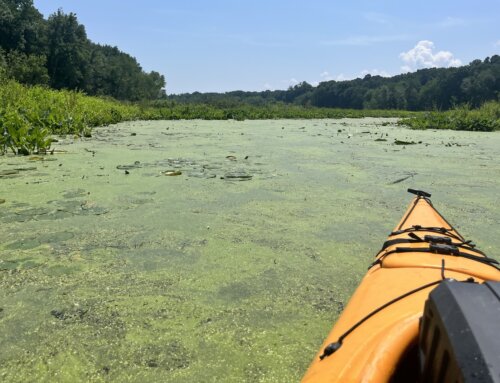March 13, 2014
Janet Deshais U.S. EPA – Region 1 5 Post Office Square, Suite 100 (OEP06-1) Boston MA 02109-3912Subject: Belchertown Water Reclamation Facility draft NPDES Permit
Permit Number: MA0102148, Public notice MA-006-14
Dear Ms. Deshais,
I am submitting comments on the draft National Pollutant Discharge Elimination System (NPDES) permit for the Belchertown Water Reclamation Facility (WRF) on behalf the Connecticut River Watershed Council (CRC). The facility discharges to Lampson Brook, which flows into Weston Brook, then Forge Pond, then Bachelor Brook, then several ponds including Aldrich Lake and Pearl City Pond, eventually discharging via Bachelor Brook to the Connecticut River in South Hadley. Lampson Brook is an impaired water body in need of a total maximum daily load (TMDL) for dissolved oxygen and total phosphorus. Weston Brook is impaired for total phosphorus. Forge Pond is impaired for nutrient/eutrophication biological indicators and non-native aquatic plants. A phosphorus TMDL has been completed for Aldrich Lake (and therefore Bachelor Brook has had a completed TMDL). We are interested in improving water quality in the Connecticut River and its tributaries such that they can one day meet Class B water quality standards. Our comments are below.
1. EPA has used the Cadwell Creek USGS gage station as a surrogate for Lampson Brook in order to estimate the 7-day, 10-year low flow (7Q10) of the receiving water. Now that MassDEP has posted an interactive online map as part of the Sustainable Water Management Iniative (SWMI), it is possible to look at whether subwatersheds are flow-impacted and therefore comparable. According to this tool (linked at http://www.mass.gov/eea/agencies/massdep/water/watersheds/sustainable-water-management-initiative-swmi.html), Lampson Brook is in the yellow groundwater category and is >10-25% flow impacted. Cadwell Creek is light blue, and is >3-10% flow impacted. The 7Q10 for Lampson Brook based on Cadwell Creek may therefore be a high estimate. However, the 7Q10 is so low and most of the flow is coming from the WRF, and this may not make a difference in determining limits. We have not done a similar analysis for Forge Pond flow inputs.
2. The June 2005 permit established pounds per day (lbs/day) limits for BOD and TSS, but those were appealed by the permittee and EPA issued a modified permit in December 2005 eliminating the loading limits. Based on the effluent monitoring data provided in Attachment A of the Fact Sheet, it appears that the facility is successfully meeting its monthly average and weekly average BOD and TSS concentration limits. The reported BOD and TSS lbs/day range for monthly average, however, greatly exceeds the permit limits that were part of the June 2005 permit, later modified. Attachment A shows a maximum monthly average of 958 lbs/day and 1,078 lbs/day of BOD and TSS, respectively, being discharged into a very small water body (7Q10 of 0.1 cfs). Because Lampson Brook is impaired for dissolved oxygen, such high BOD and TSS loading from the facility is worth a detailed analysis, and this was lacking in the Fact Sheet.
3. The Fact sheet on page 9 states that the current permit requires bacteria limitations and monitoring “year round.” This is not true. The current and draft permit sets bacteria limits during the period April 1 to October 31.
4. The discussion on ammonia-nitrogen in the Fact Sheet on page 10 is confusing. The seasonal ammonia limits in the draft permit match the December 2005 modified permit limits, yet the Fact Sheet says that the December 2005 modified permit limits were incorrect. The Fact Sheet has a table with ammonia limits that matches the June 2005 permit, but not the draft permit as it implies. Please clear up this confusion.
5. The draft permit imposes fairly stringent limits on total phosphorus (TP) limits between April 1 and October 31. We are not in favor of using the 1986 Gold Book concentrations as the criterion for nutrients, and we do think that phosphorus is a problem in downstream waterbodies that needs to be addressed through this permit and through other efforts to address nonpoint source pollution. The new TP limits may be difficult to meet, and the permit allows the facility to spend some time evaluating whether in-house modifications can be implemented to achieve the limits. This is good. We hope that the facility can come up with low-cost and creative solutions to reduce TP in the effluent. We would suggest that part (d) of the effluent characteristics listed in part B, Special Conditions, in the permit be modified to say something to the effect that if after the 12 month report no steps have been made to optimize the plant to achieve the more stringent limits, that a contract engineer be retained to ensure that the remaining schedule laid out in the permit can be met.
6. If copper and aluminum do have a reasonable potential to contribute to a water quality violation in this water body as laid out in the Fact Sheet, then CRC is in favor of the more stringent limits. We note that the facility appears to have had no Whole Effluent Toxicity (WET) problems, however.
Thank you for an opportunity to comment on this draft permit for the Belchertown Water Reclamation Facility.
Sincerely,
Andrea F. Donlon
River Steward
cc: Kathleen Keohane, MassDEP Chris Duerring, MassDEP Cindy Delpapa, Massachusetts Division of Ecological Restoration Steven Williams, Belchertown Director of Public Works






